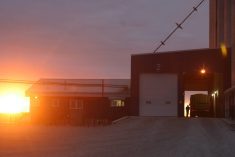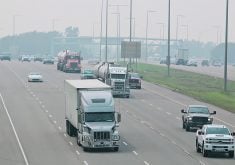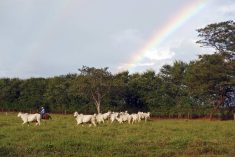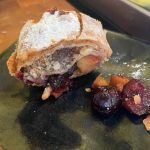ESTEVAN, Sask. Ñ In the dwindling decades of the 20th century, Brian Ross took the market signals seriously. The death of the Crow Benefit transportation subsidy was the birth of his family’s cattle expansion.
The L7 Ranch is tucked between the Estevan coalfields and the American border.
His father and grandfather had run a mixed farm with 90 head of Hereford cows on what might be characterized as tough land.
“A lot of it is better suited to stock than grain,” said Ross, president of the Saskatchewan Stock Growers Association.
Read Also

Producer profits remain under significant pressure
Manitoba farmers are facing down a double hit of high input costs, like fertilizer, and low grain prices as they harvest their next crop.
“We were about half and half until the Crow rate went out.”
His farm’s location “a long, long way to salt (water) in either direction” and close to meat packers in United States and a reasonable drive to the packer in Moose Jaw, Sask., meant cattle made better economic sense.
U.S. short-keep feeder markets formed a portion of the L7’s business until BSE closed the American border to Canadian animals.
“We can make more money marketing any grain we can grow by passing it through our cattle first,” he said.
Today Brian and son Chad operate a 2,000 head feeding operation and a 400-500 cow, Angus-cross cow-calf business.
The Rosses have reduced grain production to the point where they only grow enough to buffer themselves in years when local feed prices are high and in short supply.
Most of the feed in their feedlot is composed of alfalfa and cereal silage, mixed in a ration with mainly purchased cereals.
Chad manages the feeding operation and uses a combination of computer software ration programs and advice from feed company nutritionists. To keep feeding costs competitive, he takes advantage of variable feed markets.
“This year it’s wheat. A poor quality crop means there’s lots around at low prices,” said the University of Nebraska agriculture business grad.
“We’ve fed corn and just about anything else we could when its price was right.”
He depends on three paid staff and his veterinarian brother across the road for medical support.
Cattle are fed two or three times per day in a slick bunk system.
Their ranch supplies calves, but the Rosses also buy cattle and custom finish feeders and winter bred heifers on a cost-plus basis.
Chad spent six years after graduation developing his business skills working for cattle genetics giant ABS Global.
“I always knew I wanted to farm. So in 1998, I came back and went into business here.”
Chad and his wife Crystal have two children.
“It’s the best lifestyle I can give my kids, growing up on the farm. What you might give up with a job, you more than make up for in other factors and the ability to be your own boss,” he said.
Local coal mining has taken a bite out of some land but the need to expand forage and pasture forced the ranch to buy more in recent years.
Brian and his wife Rosalie look after the cow-calf operation, which uses “simple feeding principles. We don’t overmanage them.”
The Rosses calve in May, avoiding cold weather and wet spring conditions.
“We try to keep the calf pulling and penning to a minimum by keeping good cows,” said Brian.
Successful breeding
The family’s cattle attest to their breeding program’s effectiveness: smaller, solid framed animals of consistent size dominate their herd.
Simmental bulls tend to keep calf size average to slightly larger, but the Rosses say the later calving on grass gives the cows the opportunity to get more exercise resulting in few calving difficulties.
Cattle that are consistent on the outside are important, but the industry pays its bill based on what is inside the hide.
Before the border closed, the Rosses were experimenting with sales to U.S. Premium Beef in Kansas.
They would place calves on feed in the U.S. and then market to that organization. The U.S. group provided the Rosses with carcass data they could use in their own cattle breeding program. They were able to identify under-performing cows by using the semen of bulls with known performance characteristics.
“We made up ground in a hurry, really improving the herd with that information,” said Brian.
The pair laments the loss of the American carcass data.
Brian said the Canadian beef industry needs to take advantage of the current BSE crisis to reinvent itself based on increased producer returns for the highest quality animals, full traceability and distinction from the American system.
“The Canadian industry can’t just be sitting still waiting for the border to open. Even when it does this just shows us we have to be looking to beat the Americans and everybody else in beef. We’ve been making money up until BSE and so there wasn’t much incentive to get out there and invest heavily in our future. That might have been a mistake,” he said.
“We have to move the Canadian producer up the beef value chain.”
To that end, the L7 has been working with other producers to find a packing or marketing opportunity that will meet this need.
“That is what will keep cattle producers independent of governments over the long term. We can accept losses at one point in the supply chain if we can take advantage of gains in another,” Brian said.
















